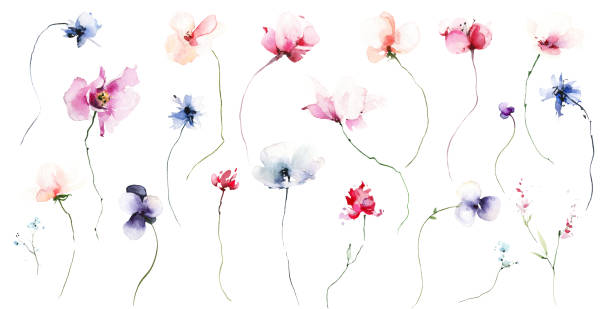Where did the ultimate Valentine’s Day cliché come from, and where does it go?
We all know the saying, “Roses are red, violets are blue…” It is like the classic Valentine’s Day thing. However, there are lots of other lovely, not-so-famous poems about flowers. Flowers have been inspiring folks for a really long time, including those who write poems.
Firstly: The Original ‘Roses Are Red’
The real version of the poem has changed a lot over many, many years. Yeah, centuries! The first one, as we think, was written way back in 1590 by a guy named Sir Edmund Spenser. His poem, The Faery Queen, is like a fancy way of praising Queen Elizabeth I and all her good qualities, like being calm, pure, friendly, and polite, you know? Spenser wanted his writing to help people become better, like well-behaved and noble.
“It was upon a Sommers shine day,
When Titan faire his beames did display,
In a fresh fountaine, farre from all mens vew,
She bath’d her brest, the boyling heat t’allay;
She bath’d with roses red, and violets blew,
And all the sweetest flowres, that in the forest grew.”
The First Spin-Off
In 1784, there was another talk about red roses in a poem by Joseph Ritson. We can think of this as the original sequel. However, you know, it already sounds a lot like the words we hear in many versions nowadays.
“The rose is red, the violet’s blue
The honey’s sweet, and so are you.
Thou art my love and I am thine;
I drew thee to my Valentine:
The lot was cast and then I drew,
And Fortune said it shou’d be you”
Les Misérables
These words travelled to other places, too. Bet you did not know that the famous French writer Victor Hugo made one of his characters sing in Les Misérables:
“Les bleuets sont bleus, les roses sont roses,
Les bleuets sont bleus, j’aime mes amours.”
Corruptions All Over
It is simple. You start with ‘Roses are red, violets are blue,’ and then use your imagination to make up the rest of the poem, depending on what is going on. That is probably why this rhyme is so popular with both people who love and those who do not.
It is a big hit, especially around Valentine’s Day. Since lots of words rhyme with ‘blue,’ anyone, even if they are not into poetry, can come up with a great poem. So, roses are red, violets are blue; it is your turn to fill in the blank and make a romantic saying!
Symbolism Behind Red Roses and Blue Violets
Usually, people like comparing their loved ones to beautiful flowers. In this case, using red roses and blue violets adds a touch of romance to the words for your loved ones or even for yourself. So, out of the millions of love poems out there, this one has been the most popular for a really long time. Now, let us find out why red roses and blue violets are the stars of this romantic poem.
Roses are flowers that basically shout “love” all over the world. And guess what? Red is the official colour of love. Now, violets are often found in bouquets, especially those given as gifts on Valentine’s Day. The color violet stands for things like being faithful, simple, humble, and just being a good human.
People May Also Ask
What is the original “roses are red, violets are blue” poem?
We all know the famous poem that starts with “Roses Are Red” and mentions violets being blue. This poem goes way back to 1590 by Sir Edmund Spense and got popular in 1784 with Gammer Gurton’s Garland: “The rose is red, the violet’s blue, The honey’s sweet, and so are you.”
What does “roses are red, violets are blue” mean?
This poem uses roses to symbolize love worldwide because red is considered the colour of love. Violets, often used in Valentine’s bouquets, represent faithfulness, simplicity, modesty, and humanity with their violet colour.
What kind of poetry is “Roses are red”?
“Roses Are Red” is a love poem and children’s rhyme. It is well-known for Valentine’s Day and has inspired many funny and playful versions.
Why does the poem say violets are blue?
Actually, violets are not blue, but saying so fits the rhythm and rhyme better. The color violet is more like blue than purple. Plus, let us not forget that roses can be pink, yellow, white, or even orange, not just red.







